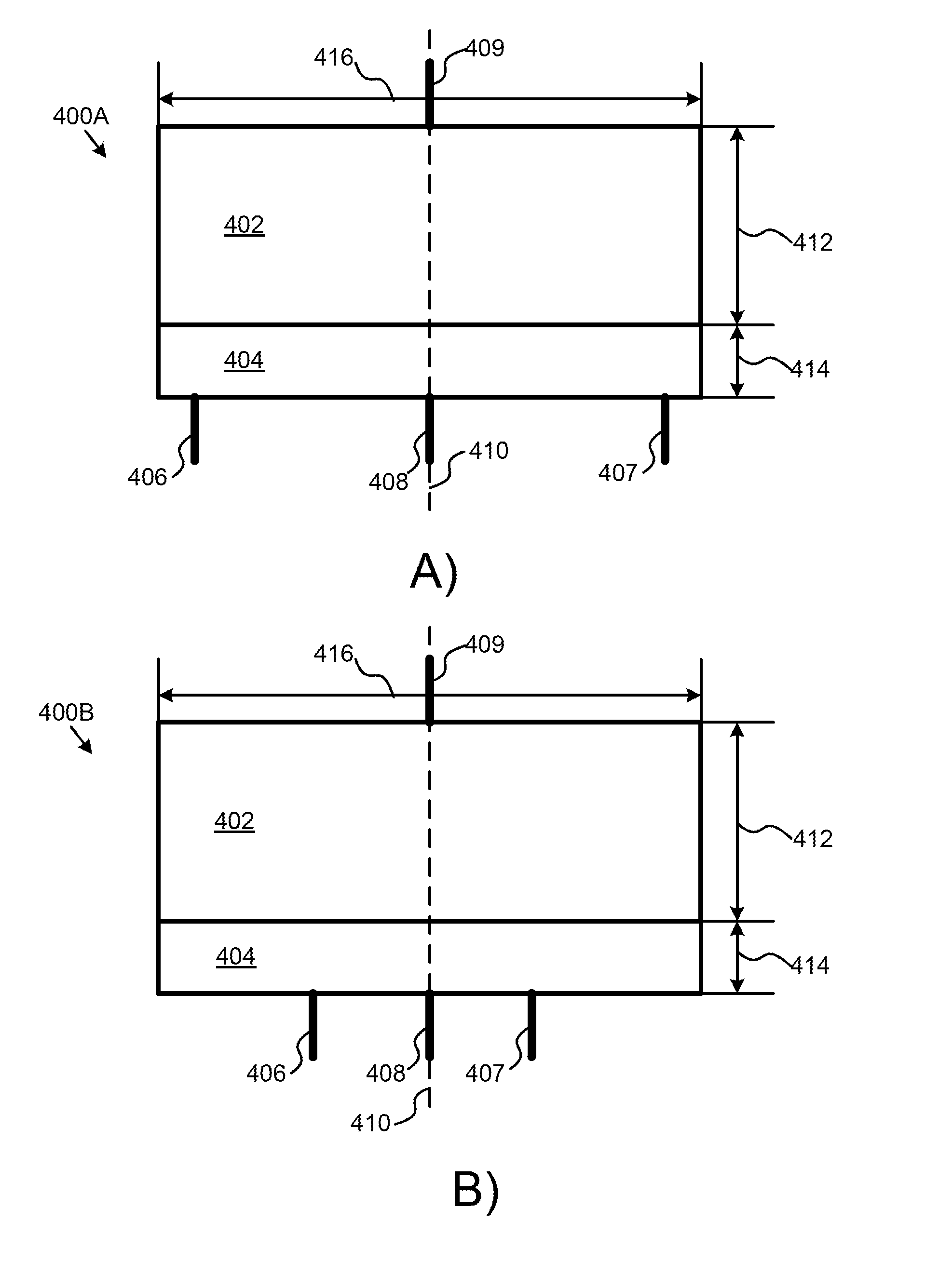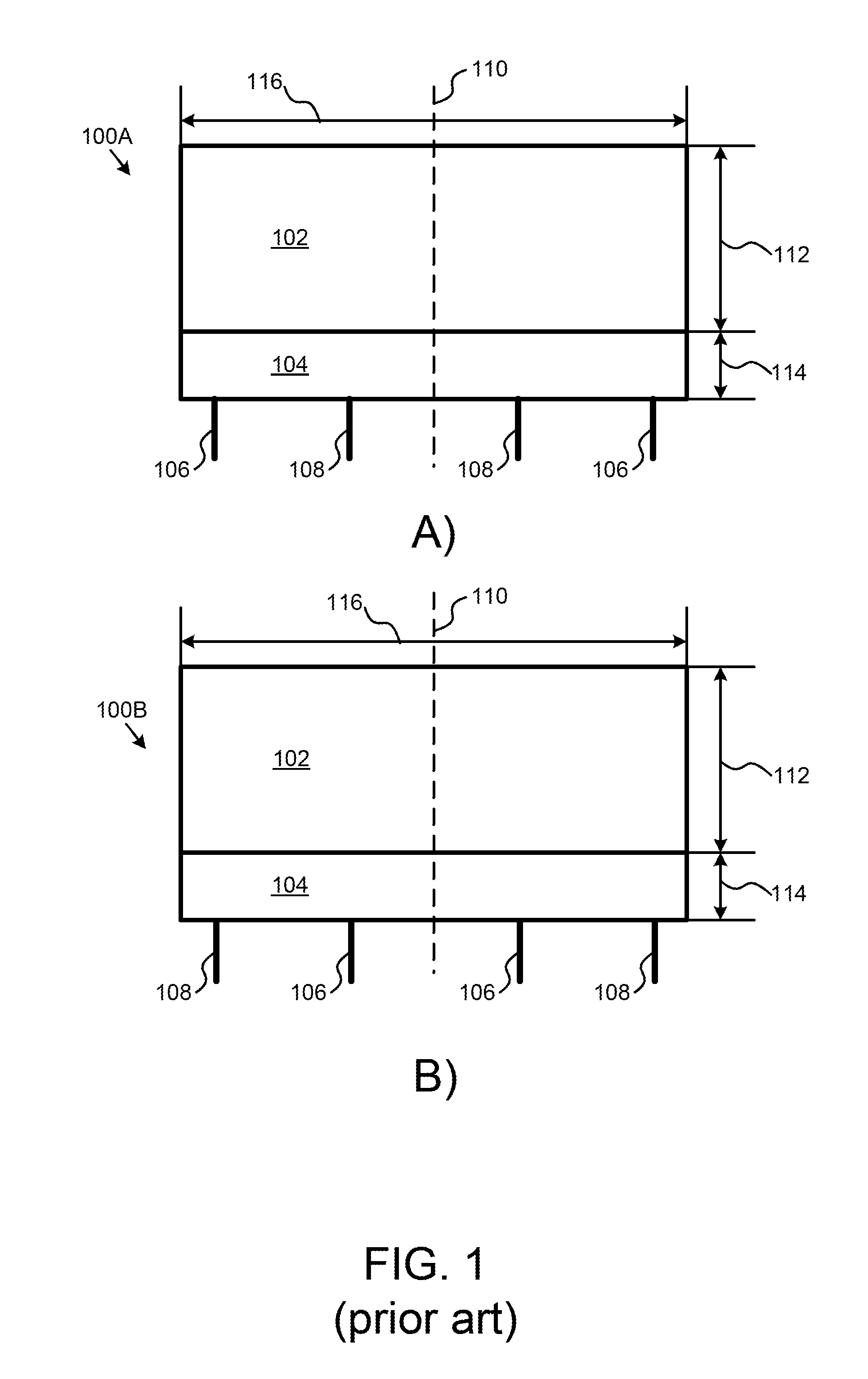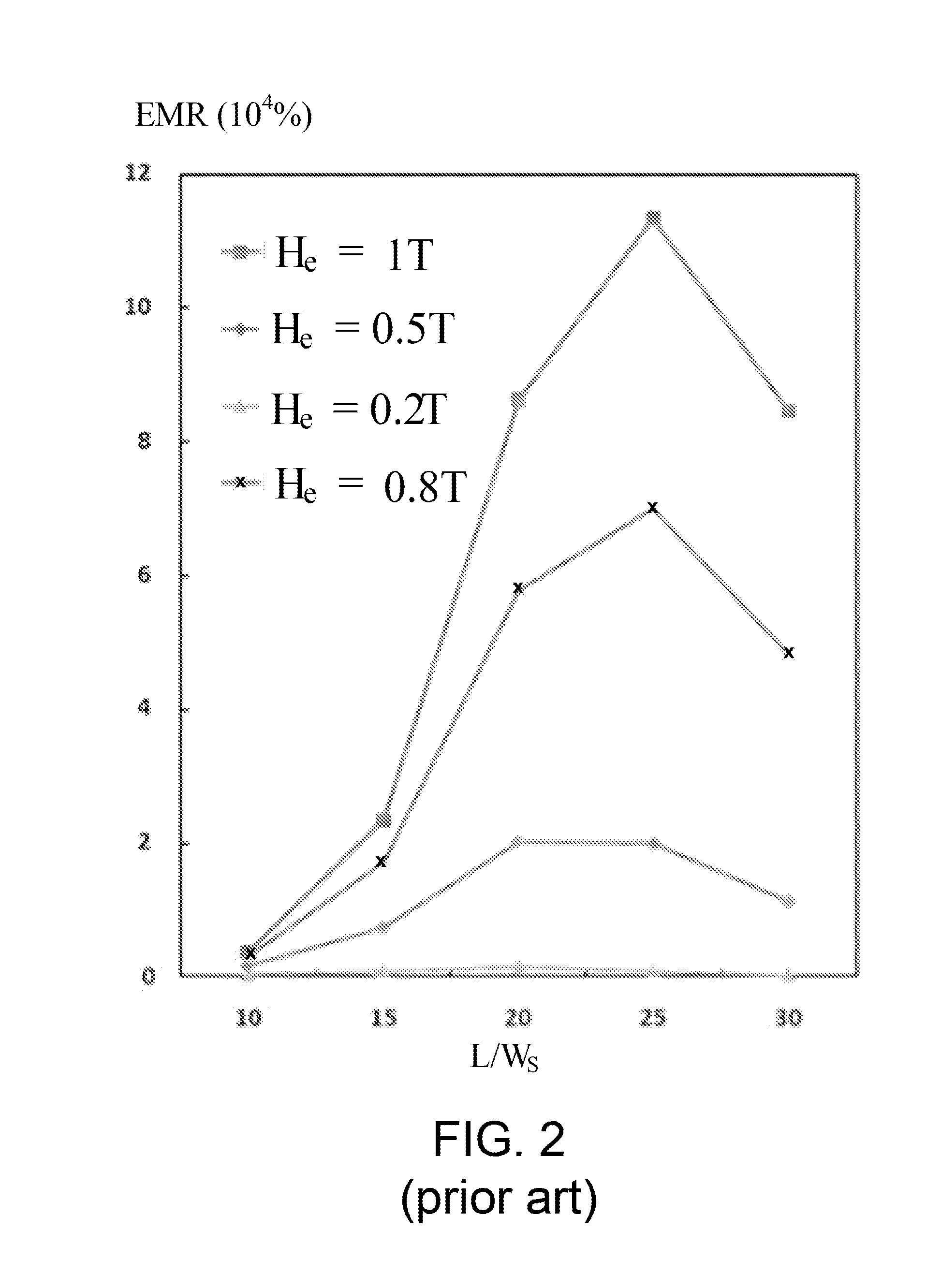Low-noise magnetic sensors
- Summary
- Abstract
- Description
- Claims
- Application Information
AI Technical Summary
Benefits of technology
Problems solved by technology
Method used
Image
Examples
Embodiment Construction
[0062]The present embodiments describe an advantageous structure that may be useful for sensing magnetic fields. Advantageously, the same or similar structure may be used for both an EMR sensor and a Hall Effect sensor. For example, embodiments of a semiconductor / metal hybrid structure, which comprises a conductive semiconductor layer and a metallic shunt are described. Another advantage of this structure may be the low-noise performance characteristics achieved through use of the hybrid metallic shunt structure, which may reduce the output resistance of the sensor.
[0063]In one embodiment, the magnetic sensor includes a semiconductor layer. In some embodiments, the sensor may include a conductive layer substantially coupled to the semiconductor layer. In some embodiments, the sensor may include a first voltage lead coupled to the semiconductor layer. In some embodiments, the first voltage lead may be configured to provide a voltage for measurement by a voltage measurement circuit. I...
PUM
 Login to View More
Login to View More Abstract
Description
Claims
Application Information
 Login to View More
Login to View More - R&D
- Intellectual Property
- Life Sciences
- Materials
- Tech Scout
- Unparalleled Data Quality
- Higher Quality Content
- 60% Fewer Hallucinations
Browse by: Latest US Patents, China's latest patents, Technical Efficacy Thesaurus, Application Domain, Technology Topic, Popular Technical Reports.
© 2025 PatSnap. All rights reserved.Legal|Privacy policy|Modern Slavery Act Transparency Statement|Sitemap|About US| Contact US: help@patsnap.com



